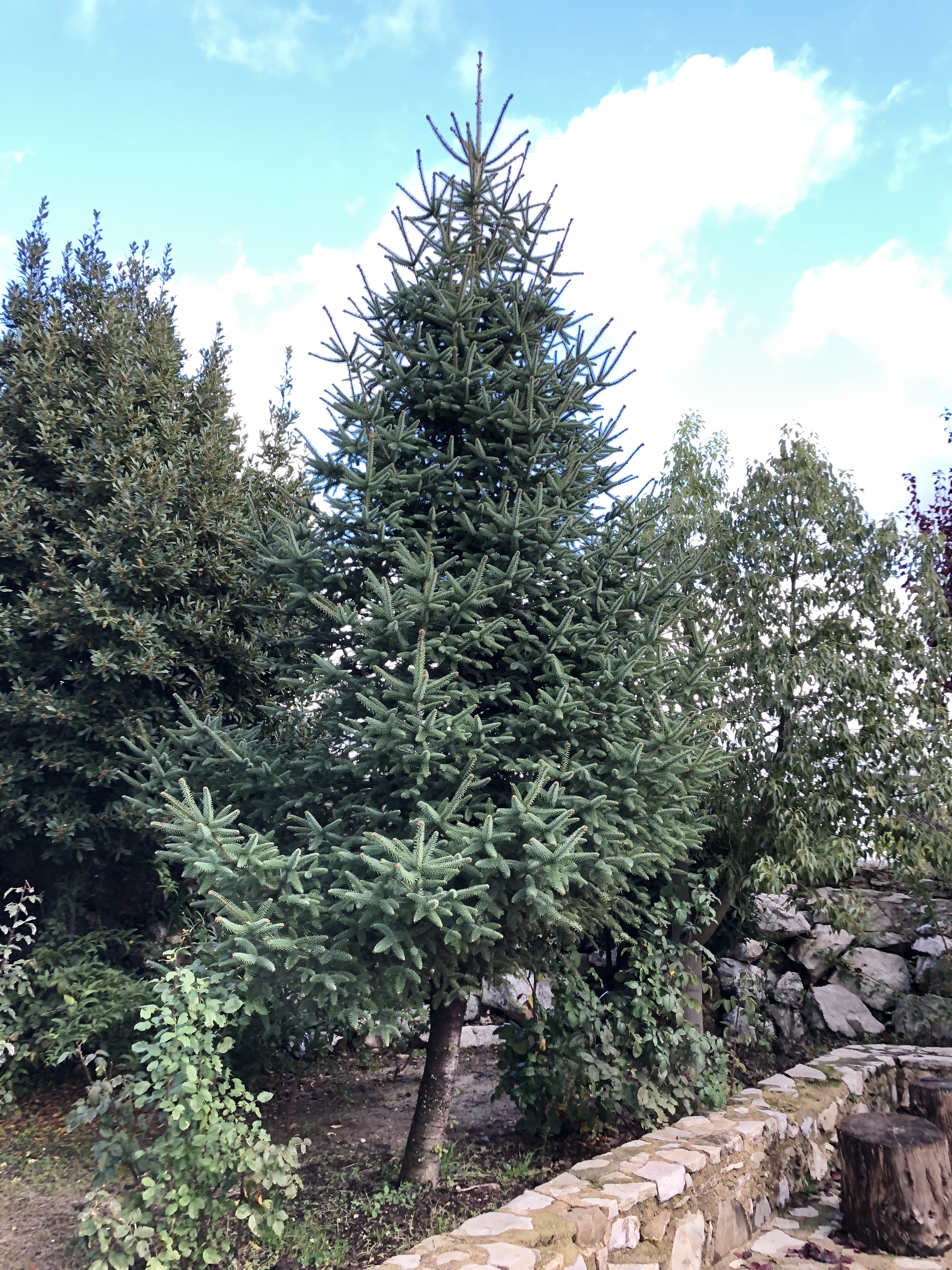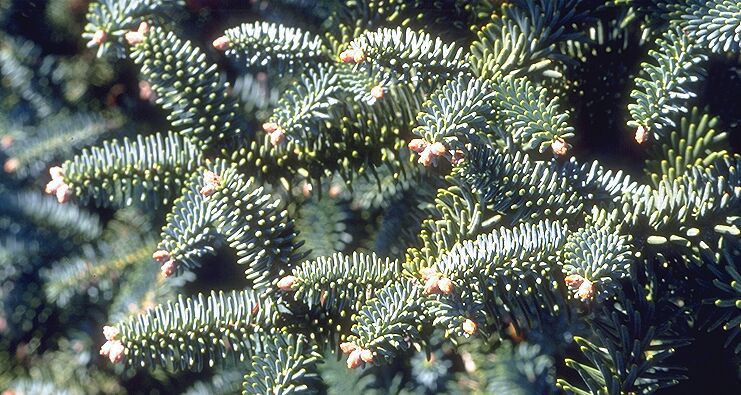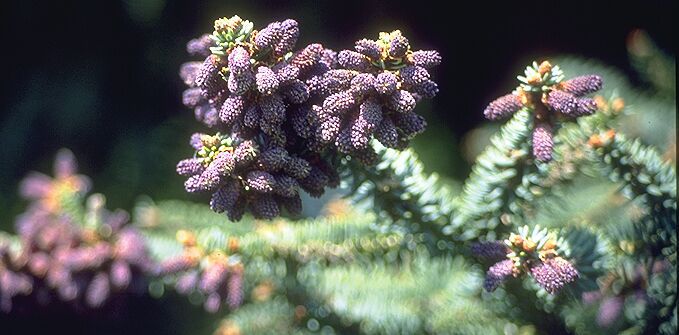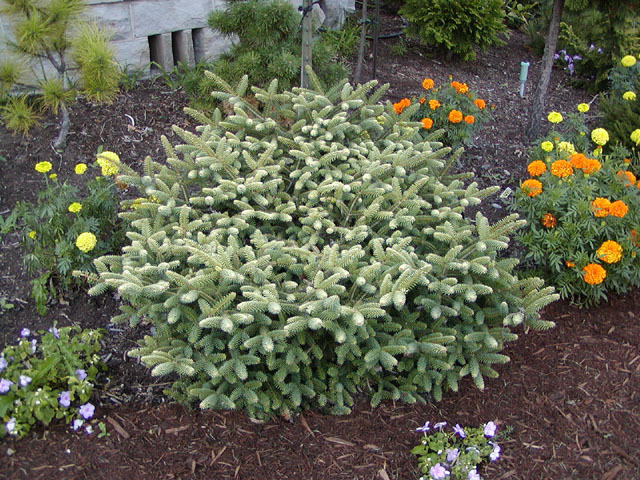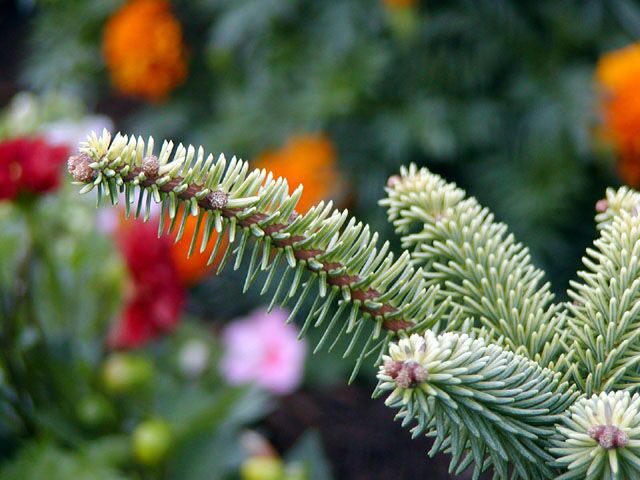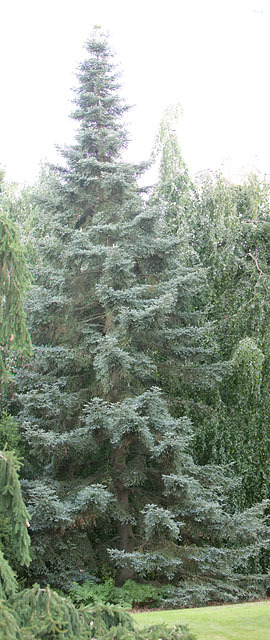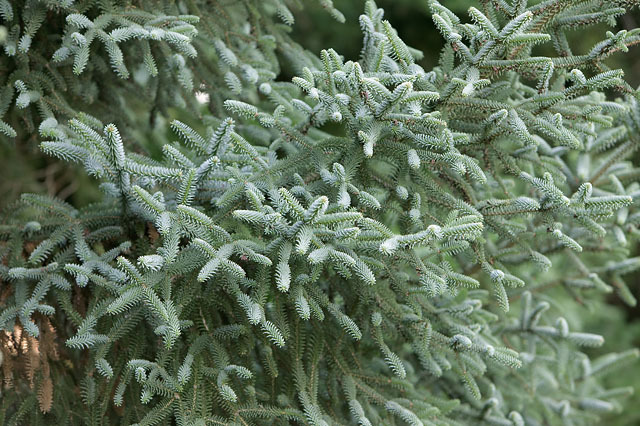Abies pinsapo 'Glauca'™ is a broadly conical, slow growing, medium sized evergreen coniferous tree. Its grey/ green leaves consist of stiff, blunt needles, arranged radially around the shoot and are up to 0.8 inch (2 cm) long. The male and female cones appear on the same tree, these are initially pale green or purple and ripen to brown. When mature, the scales of the cones disintegrate to release winged seeds. It is slow growing at first, but once mature, the plant will grow 12 inches (30 cm) or more a year.
The landscape architect may find Abies pinsapo 'Glauca'™ as an interesting evergreen specimen tree with an architectural branch structure. It prefers a sheltered position and is not tolerant of urban pollution. It is drought tolerant once established. Abies pinsapo 'Glauca'™ prefers moist, well-drained soils. It will tolerate most pH of soil but prefers slightly acidic. It requires little maintenance.
This cultivar originated as a seedling that was named and introduced to the nursery trade in 1867 by Desfossé and Thuillier Nursery, Orléans, France. It was quite likely that numerous blue-needled clones have been distributed over time under this cultivar name.
The Royal Horticultural Society gave Abies pinsapo 'Glauca'™ their prestigious Award of Garden Merit in 1993.
[ Sandra McLean Cutler in Dwarf & Unusual Conifers Coming of Age: A Guide to Mature Garden Conifers ] Rigid, thick, powder blue needles; broad, stately pyramidal tree; full sun.
